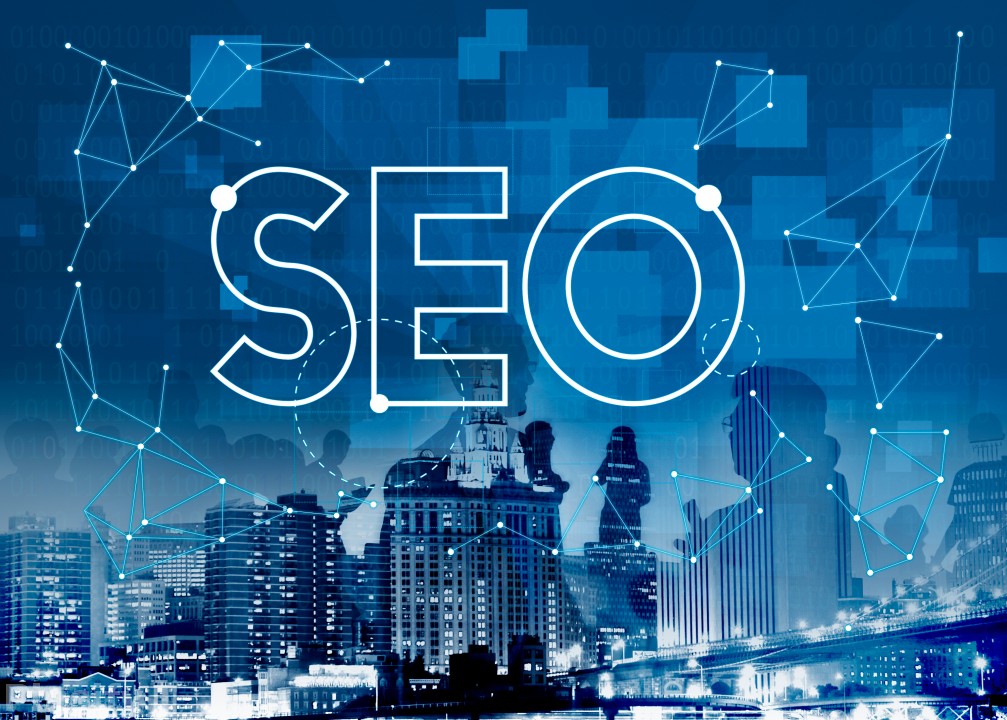Unlocking Success: Essential Best Practices for Digital Marketing in 2025
In an ever-evolving digital landscape, staying ahead of the curve in marketing strategies is essential for businesses aiming to thrive in 2025. As consumer behaviours shift and technology advances, understanding the latest trends and best practices in digital marketing becomes paramount.
From the rise of artificial intelligence and personalized content to the increasing importance of social media engagement and data-driven decision-making, this year presents both challenges and opportunities for marketers. In this comprehensive guide, we will explore essential best practices that can help you unlock the doors to success in your digital marketing efforts.
Whether you’re a seasoned professional looking to refine your approach or a newcomer eager to make your mark, join us as we delve into strategies that will elevate your brand, drive customer engagement, and ultimately lead you to achieve your marketing goals this year and beyond.
-
Introduction: The Evolving Landscape of Digital Marketing
In the fast-paced world of digital marketing, the only constant is change. As we step into 2025, businesses must navigate a landscape that is more dynamic and competitive than ever before, shaped by shifting consumer behaviours, emerging technologies, and evolving marketing platforms. The introduction of artificial intelligence, the rise of social media influencers, and the growing emphasis on sustainability are just a few trends transforming the way brands interact with their audiences.
Today’s consumers are bombarded with a deluge of information, making it crucial for marketers to not only capture attention but also foster genuine connections. Personalization has become a key differentiator, as customers expect tailored experiences that resonate with their individual needs and preferences. As privacy regulations tighten and concerns about data security grow, businesses must also find a balance between effective targeting and respecting consumer privacy.
In this new era of digital marketing, agility is paramount. Marketers must be prepared to pivot strategies quickly in response to market changes, leveraging real-time analytics and performance metrics to optimize campaigns on the fly. The ability to innovate and adapt will not only enhance brand visibility, but also build lasting customer loyalty.
As we delve deeper into the essential best practices for digital marketing in 2025, we’ll explore strategies that not only keep pace with these changes, but also position your brand for long-term success in an ever-evolving digital space. Whether you’re a seasoned marketer or just starting out, understanding these foundational principles will help you unlock the potential of your digital marketing efforts and drive meaningful engagement with your audience.
-
Understanding Your Audience: Importance of Market Research

In the ever-evolving landscape of digital marketing, understanding your audience has never been more crucial. Market research serves as the foundation upon which successful marketing strategies are built. Without a deep comprehension of who your customers are, what they value, and how they behave online, your efforts may fall flat amidst the noise of the digital world.
Market research begins with identifying your target demographic. Are they millennial seeking trendy lifestyle products, or are they busy professionals looking for timesaving solutions? By segmenting your audience based on age, gender, location, interests, and buying behaviour, you can tailor your messaging to resonate more effectively. Dive into analytics, surveys, and social media insights to gather data that reveals not just who your customers are, but also their pain points, preferences, and motivations.
Moreover, staying updated on market trends is vital. Consumer behaviour shifts rapidly, influenced by factors such as technological advancements, economic changes, and cultural movements. Regularly revisiting your research allows you to adapt your strategies in real-time, ensuring that your marketing campaigns remain relevant and impactful.
Utilizing tools like Google Analytics, social media listening platforms, and customer feedback forms can provide valuable insights into your audience’s journey. Understanding their interaction with your brand what content they engage with, what products they abandon in their shopping carts, and which emails they open enables you to refine your approach and create personalized experiences.
In 2025, leveraging AI-driven analytics and predictive modelling can further enhance your understanding of your audience. These technologies can help you anticipate customer needs and preferences, allowing you to deliver highly targeted content and offers that drive engagement and conversions.
Ultimately, the importance of market research lies in its ability to empower you to create meaningful connections with your customers. When your marketing efforts align with their desires, you not only foster loyalty but also unlock opportunities for sustained success in the competitive digital arena. Embrace the power of understanding your audience, and watch your digital marketing initiatives flourish.
-
Crafting a Data-Driven Marketing Strategy
In the ever-evolving landscape of digital marketing, crafting a data-driven marketing strategy is more crucial than ever. As we dive into 2025, the sheer volume of data available to marketers can be overwhelming, yet it also presents a golden opportunity to refine your approach and enhance your outcomes. A data-driven strategy allows you to make informed decisions based on real insights rather than relying on gut feelings or outdated assumptions.
Begin by collecting data from various sources, such as website analytics, social media metrics, and customer feedback. Tools like Google Analytics can provide valuable information about user behaviour, traffic sources, and conversion rates. By analysing this data, you can identify trends that reveal what resonates with your audience and what doesn’t. For instance, you might discover that certain types of content drive higher engagement or that your email campaigns perform better with specific audience segments.
Next, segment your audience based on their behaviours and preferences. This segmentation enables you to tailor your marketing messages more effectively, ensuring that each customer receives content that speaks directly to their interests. Personalization is paramount; when customers feel that your brand understands their needs, they are more likely to engage and convert.
Incorporate A/B testing into your strategy. By testing different variations of your marketing materials, be it email subject lines, ad creative, or landing page designs, you can determine what works best and optimize your efforts accordingly. This iterative approach not only enhances your campaigns, but also fosters a culture of continuous improvement.
Finally, monitor your results regularly and be willing to pivot on your strategy as necessary. Digital marketing is not a set-it-and-forget-it endeavour; it requires ongoing analysis and agile adjustments. By staying attuned to your data, you can seize new opportunities, address challenges as they arise, and ultimately drive better results.
In 2025, a data-driven marketing strategy is not just an option; it’s a necessity. By leveraging data effectively, you can unlock deeper insights into your audience, craft more interesting campaigns, and significantly enhance your overall marketing performance. Embrace the power of data, and watch your digital marketing efforts flourish.
-
Embracing SEO: Best Practices for 2025
In the ever-evolving landscape of digital marketing, embracing SEO is more crucial than ever in 2025. As search engines refine their algorithms and user behaviour continues to shift, staying ahead of the curve requires a strategic approach to search engine optimization.
To start, focus on creating high-quality, relevant content that addresses the needs and questions of your target audience. In 2025, search engines prioritize content that not only ranks well but also provides genuine value. This means incorporating thorough research, data-driven insights, and engaging storytelling into your articles, blog posts, and web pages. Remember, quality over quantity is the name of the game.
Next, ensure your website is optimized for mobile devices. With an increasing number of users accessing the web from smartphones and tablets, Google has made mobile-friendliness a key ranking factor. A responsive design, fast loading times, and easy navigation are essential for both user experience and SEO performance.
Additionally, leverage the power of local SEO if you run a brick-and-mortar business or serve a specific geographical area. Optimize your Google My Business listing, gather positive customer reviews, and utilize location-based keywords to enhance your visibility in local search results. This can significantly impact foot traffic and local online visibility.
Moreover, don’t overlook the importance of technical SEO. Regularly audit your website for broken links, duplicate content, and site speed issues. Implementing structured data mark-up can also enhance your search visibility by helping search engines understand your content better and potentially enabling rich snippets.
Lastly, keep an eye on emerging trends, such as voice search and video optimization. As more users turn to voice-activated devices and platforms like YouTube, adapting your SEO strategy to accommodate these formats will help you capture a broader audience.
By embracing these best practices, you can unlock the full potential of SEO in 2025, ensuring that your digital marketing efforts yield lasting success and connect you with the customers who matter most.
-
The Power of Content Marketing: Creating Valuable Content
In the rapidly evolving landscape of digital marketing, content remains king, and in 2025, its power is more pronounced than ever. Creating valuable content is not just a strategy; it’s an essential practice for engaging your audience and driving conversions. Today’s consumers are inundated with options, and they crave authenticity, relevance, and substance in the content they consume.
To harness the true potential of content marketing, start by understanding your audience. Conducting thorough audience research will help you tailor your content to their interests, pain points, and preferences. This insight allows you to craft articles, videos, podcasts, and into graphics that resonate deeply with your target demographic, making them not just passive viewers, but active participants in your brand story.
Next, focus on quality over quantity. In a world where information is abundant, producing high-quality content that informs, entertains, or solves problems is vital. Invest time in creating well-researched and thoughtfully presented pieces that provide genuine value. This not only establishes your brand as an authority in your field, but also fosters trust and loyalty among your audience.
Furthermore, consider the various formats in which content can be delivered. Blog posts, social media updates, email newsletters, and even webinars can all serve to engage different segments of your audience. Diversifying your content strategy ensures that you meet your customers where they are, accommodating different preferences for content consumption.
Lastly, don’t forget about optimization. Quality content needs to be discoverable. Implement SEO best practices by incorporating relevant keywords, Meta descriptions, and engaging titles to improve your visibility on search engines. Additionally, promoting your content through social media and email campaigns will amplify its reach, driving more traffic to your site.
In summary, in 2025, the power of content marketing lies in its ability to create meaningful connections with your audience. By prioritizing valuable content, understanding your audience, and utilizing diverse formats and optimization techniques, you can unlock the full potential of content marketing and pave the way for your digital marketing success.
-
Social Media Trends: Engaging Your Audience Where They Are.

In the ever-evolving landscape of digital marketing, staying attuned to social media trends is crucial for engaging your audience where they are most active. In 2025, platforms like TikTok, Instagram, and LinkedIn continue to dominate, each presenting unique opportunities to connect with diverse demographics. It’s essential to recognize that each platform has its own culture, tone, and style, which means tailoring your content to resonate with the specific audience that frequents each space.
For instance, short-form video content is taking centre stage on platforms like TikTok and Instagram Reels. Crafting quick, engaging videos that entertain, inform, or inspire can significantly increase your brand’s visibility and foster a deeper connection with your audience. Consider leveraging trends, popular sounds, or challenges to create relatable content that speaks to your target market, encouraging them to share and engage with your brand.
Conversely, LinkedIn remains the go-to for B2B interactions, where thought leadership and professional insights can establish your brand as an authority in your industry. Sharing informative articles, industry updates, and engaging in meaningful conversations can help you build a loyal community of followers who see your brand as a trusted resource.
Moreover, incorporating user-generated content is a trend that continues to thrive. Encouraging your customers to share their experiences with your products or services not only enhances authenticity, but also fosters community. Highlighting customer stories on your platforms can create a sense of belonging, making followers feel valued and more likely to engage with your brand.
In 2025, remember that engaging your audience is not just about selling a product; it’s about creating a dialogue and building relationships. By staying current with social media trends and adapting your strategy accordingly, you can effectively reach your audience in the spaces they inhabit, ensuring your brand remains relevant and top of mind.
-
Email Marketing: Building Relationships through Personalization
In the fast-paced digital landscape of 2025, where consumers are bombarded with endless notifications and advertisements, email marketing remains a powerful tool for nurturing relationships. But to truly unlock its potential, personalization is key. Gone are the days of generic email blasts; today’s consumers crave tailored experiences that speak directly to their interests, behaviours, and preferences.
Imagine receiving an email that not only addresses you by name but also features products or content that align perfectly with your recent browsing history or past purchases. This level of personalization makes customers feel valued and understood, fostering a deeper connection with your brand. Utilizing data analytics, businesses can segment their audience based on demographics, purchase history, and engagement levels, allowing for targeted messaging that resonates on an individual level.
Incorporating personalized recommendations, exclusive offers, and relevant content into your email campaigns can significantly enhance engagement rates. For instance, if a customer frequently buys eco-friendly products, sending them tailored emails highlighting new sustainable items or special promotions can drive both interest and sales.
Additionally, consider implementing dynamic content in your emails, which allows you to customize sections of the email based on the recipient’s profile. This approach not only captures attention but also encourages recipients to take action, whether it’s clicking through to your website or completing a purchase.
Moreover, personalization goes beyond just addressing customers by their first names. It’s about creating a narrative that aligns with their journey. Sending follow-up emails after a purchase with tips on product usage or checking in on customer satisfaction can make a world of difference in building loyalty.
In a digital era, where relationships matter more than ever, prioritizing personalized email marketing strategies can lead to higher open rates, increased conversions, and ultimately, a more dedicated customer base. As you refine your digital marketing efforts this year, remember that every email is an opportunity to connect. Make each one count!
-
Leveraging Influencer Partnerships: Authentic Engagement

In the ever-evolving landscape of digital marketing, leveraging influencer partnerships has emerged as a powerful strategy to foster authentic engagement and drive brand awareness. In 2025, consumers are more discerning than ever, often seeking genuine connections rather than traditional advertising. This shift has made influencers individuals who have cultivated trust and credibility within specific niches an invaluable asset for brands looking to resonate with their target audience.
When forging partnerships with influencers, it’s essential to prioritize authenticity. Choose influencers whose values align with your brand and whose audience mirrors your target demographic. This alignment ensures that the collaboration feels natural and relatable, rather than forced or contrived. For example, a sustainable fashion brand might partner with eco-conscious influencers who passionately advocate for environmentally friendly practices, making the partnership feel organic and genuine.
Moreover, consider diversifying your influencer strategy. While macro-influencers can provide vast reach, micro-influencers often boast higher engagement rates and more dedicated followings. They’re smaller, but highly engaged audiences allow for deeper conversations and connections, which can lead to more impactful brand experiences. This approach not only broadens your reach but also creates a more intimate dialogue with potential customers.
Engagement tactics can take many forms, from sponsored posts and product reviews to Instagram takeovers and live stream events. Encourage influencers to share their authentic experiences with your products, as consumers are drawn to storytelling. An influencer’s candid review or a behind-the-scenes glimpse into their life with your product can forge a deeper emotional connection with their audience, ultimately driving interest and sales.
Lastly, don’t forget to track and analyse the results of your influence partnerships. Use metrics, such as engagement rates, referral traffic, and conversion rates to assess the effectiveness of your campaigns. This data will not only help you refine your influence strategy, but also demonstrate the tangible value of these partnerships to your stakeholders.
In summary, leveraging influencer partnerships in 2025 is about more than just expanding your reach; it’s about creating authentic connections and meaningful interactions that can elevate your brand in the minds of consumers. Embrace this trend, and you’ll find that genuine engagement can unlock the doors to lasting success in the digital marketing arena.
-
The Role of Video Marketing: Capturing Attention Effectively
Video marketing has emerged as a cornerstone of digital marketing strategies in 2025, and for good reason. In a world where consumers are bombarded with information, video content stands out as a dynamic and engaging way to communicate your brand’s message. With the average person retaining 95% of a message when they watch it in a video compared to just 10% when reading text, it’s evident that video has a unique power to captivate and inform.
Platforms like TikTok, Instagram Reels, and YouTube Shorts have transformed how audiences consume content, making brevity and creativity essential. In 2025, your video marketing strategy should focus not only on high-quality production but also on authenticity and reliability. Viewers are drawn to genuine stories and behind-the-scenes glimpses that humanize your brand. This approach fosters a deeper connection and builds trust with your audience.
Moreover, live streaming has gained significant traction, allowing brands to engage with their customers in real time. Whether it’s a product launch, a Q&A session, or a casual behind-the-scenes tour, live video offers an interactive experience that static content simply can’t match. Encourage audience participation through comments and questions to create a community around your brand.
Don’t forget about the importance of optimizing your videos for search engines. Incorporate relevant keywords in your video titles, descriptions, and tags to boost visibility. Creating compelling thumbnails and engaging call-to-actions can also drive higher click-through rates and conversions.
In summary, harnessing the power of video marketing in 2025 is about more than just producing content; it’s about creating meaningful experiences that resonate with your audience. By embracing authenticity, leveraging live interactions, and prioritizing optimization, you’ll not only capture attention but also cultivate lasting relationships with your customers.
-
Utilizing Analytics and KPIs to Measure Success
In the fast-paced world of digital marketing, understanding the performance of your campaigns is crucial for unlocking success. Utilizing analytics and key performance indicators (KPIs) allows you to gain valuable insights into what is working, what isn’t, and where adjustments are needed to maximize your efforts.
Start by defining clear KPIs aligned with your business objectives. Common metrics include conversion rates, click-through rates, customer acquisition costs, and return on investment (ROI). By establishing these benchmarks, you can create a roadmap for your marketing strategy and clearly measure progress over time.
Once your KPIs are set, leverage powerful analytics tools like Google Analytics, HubSpot, or social media insights to monitor your performance. These tools provide a wealth of data, from user demographics and behaviour patterns to traffic sources and engagement levels. By diving deep into this data, you can identify trends, spot opportunities, and make informed decisions that drive better results.
For instance, if you notice a high bounce rate on a particular landing page, this signals that visitors are leaving without engaging. Analysing user paths can help you understand why this is happening perhaps the content isn’t resonating, or the page takes too long to load. Armed with this knowledge, you can implement changes, such as optimizing page speed or revising the copy, to enhance user experience and keep potential customers on your site longer.
Furthermore, regular review of your analytics enables you to pivot your strategy in real-time. If a particular campaign isn’t performing as expected, you can reallocate resources to more effective channels, ensuring that your marketing budget is spent wisely.
In 2025, the landscape of digital marketing is more competitive than ever. By effectively utilizing analytics and KPIs, you not only measure your success but also create a cycle of continuous improvement that can lead to sustained growth and a stronger connection with your audience. Remember, what gets measured gets managed, and in the dynamic realm of digital marketing, this mantra couldn’t be more relevant.
-
The Importance of Mobile Optimization
In 2025, the importance of mobile optimization cannot be overstated. With over half of all global web traffic now coming from mobile devices, brands that fail to prioritize a seamless mobile experience risk alienating a vast audience. Think about it: your potential customers are constantly on the go, accessing information, products, and services from their smartphones and tablets. If your website is not optimized for mobile, you’re not just inconveniencing your visitors; you’re losing potential sales.
Mobile optimization goes beyond simply making your site responsive. It involves creating an intuitive user experience that caters to mobile behaviours. This means ensuring that your site loads quickly, as slow-loading pages can frustrate users and lead to high bounce rates. Additionally, navigation should be simple and straightforward, utilizing touch-friendly buttons and minimizing the need for excessive scrolling or zooming.
Furthermore, consider the importance of mobile-friendly content. This includes using larger fonts, concise text, and eye-catching visuals that capture attention even on smaller screens. Video content, which is becoming increasingly popular, should also be optimized for mobile viewing, allowing users to engage with your brand easily and effectively.
Lastly, remember that mobile optimization is crucial for SEO in 2025. Search engines like Google prioritize mobile-friendly websites in their rankings, meaning that if your site isn’t optimized, it could be buried far down the search results. Ensuring your site meets mobile optimization standards not only enhances user experience but also boosts your visibility, driving more traffic to your business.
In summary, investing in mobile optimization is no longer an option; it’s a necessity. By embracing best practices for mobile design and functionality, you can unlock new opportunities for engagement and conversion, ensuring that your brand stays relevant and competitive in the ever-evolving digital landscape.
-
Adopting Automation Tools for Efficiency
In the fast-paced world of digital marketing, efficiency is paramount. Adopting automation tools has become a game-changer for businesses looking to streamline their operations and maximize their impact. Automation not only saves time but also allows for greater precision in targeting and messaging, ensuring that your campaigns resonate with the right audience.
Imagine being able to send personalized emails to thousands of customers simultaneously, schedule social media posts weeks in advance, or analyse website traffic and user behaviour in real time all without the need for constant manual intervention. Automation tools can handle these tasks, freeing up your team to focus on strategy and creativity rather than repetitive processes.
One of the key benefits of using automation tools is the ability to nurture leads throughout the customer journey. With automated workflows, you can guide potential customers through a personalized experience, delivering relevant content at each stage of their decision-making process. This not only enhances engagement, but also increases the likelihood of conversion.
Additionally, automation tools provide valuable insights and analytics, allowing you to track the performance of your campaigns with ease. By analysing this data, you can make informed decisions, optimize your strategies, and refine your messaging to better meet the needs of your audience.
In 2025, investing in automation is not just a luxury; it’s a necessity. As competition intensifies and consumer expectations continue to evolve, those who leverage these tools will find themselves at a distinct advantage. Embrace automation, and unlock the potential for a more efficient, effective, and ultimately successful digital marketing strategy.
-
Staying Compliant: Navigating Privacy and Regulations
In an era where data breaches and privacy concerns dominate headlines, navigating the complex landscape of privacy regulations is more crucial than ever for digital marketers. With laws like the General Data Protection Regulation (GDPR) in Europe and the California Consumer Privacy Act (CCPA) in the United States, staying compliant isn’t just a legal obligation, it’s a fundamental aspect of building trust with your audience.
As you craft your digital marketing strategies for 2025, it’s essential to prioritize transparency about how you collect, store, and use customer data. Start by ensuring that your privacy policy is up-to-date and easily accessible on your website. This policy should clearly outline the types of data you collect, the purposes for which it’s used, and how users can manage their preferences.
Additionally, consider implementing a robust consent management system. This allows users to opt in or out of data collection practices seamlessly, fostering a sense of control over their personal information. Remember, customers are increasingly wary of how their data is being utilized; showing that you respect their privacy can differentiate your brand in a crowded marketplace.
Furthermore, keeping abreast of evolving regulations is paramount. Privacy laws are continually changing, and what was compliant yesterday may not be tomorrow. Subscribe to industry newsletters, join relevant forums, or consult with legal experts to stay informed about the latest developments in privacy regulations.
Lastly, consider how compliance can enhance your overall marketing strategy. Rather than viewing privacy regulations as a hurdle, see them as an opportunity to build a more ethical relationship with your customers. By championing user privacy, you can position your brand as a trustworthy and responsible player in the digital space, ultimately unlocking long-term success in your marketing efforts. Embracing these best practices in compliance will not only protect your business but also cultivate a loyal customer base that values transparency and integrity.
-
Continuous Learning: Keeping Up with Industry Trends
In the fast-paced realm of digital marketing, the only constant is change. As we navigate through 2025, staying ahead of the curve requires a commitment to continuous learning. The digital landscape is shaped by evolving algorithms, emerging technologies, and shifting consumer behaviours, making it imperative for marketers to adapt and refine their strategies continually.
To effectively keep up with industry trends, start by dedicating time each week to read reputable marketing blogs, listen to podcasts, or participate in webinars. Resources like HubSpot, Moz, and Neil Patel offer invaluable insights that can help you understand the latest tools and techniques that are gaining traction in the field. Subscribing to newsletters from industry leaders can also provide a steady stream of fresh ideas and actionable tips right in your inbox.
Additionally, consider joining online communities or forums where digital marketers share their experiences and strategies. Platforms like LinkedIn, Reddit, and Facebook groups can be treasure troves of information and networking opportunities. Engaging with peers not only broadens your perspective, but also enables you to learn from the successes and challenges of others.
One of the most effective ways to stay informed is by taking advantage of online courses and certifications. Websites such as Coursera, Udemy, and Google Digital Garage offer courses that cover various aspects of digital marketing, from SEO to social media advertising. These platforms allow you to learn at your own pace while equipping you with the skills needed to implement the latest trends effectively.
Finally, don’t underestimate the power of experimentation. Testing new strategies and tools on a small scale can provide first-hand insights into what works best for your audience. By embracing a mind-set of continuous improvement and being open to learning, you not only enhance your marketing prowess but also position your brand as a forward-thinking leader in the ever-evolving digital marketing landscape.
In summary, continuous learning is not just an option but a necessity in the digital marketing world of 2025. By actively pursuing knowledge, engaging with others in the field, and applying what you learn, you can unlock new levels of success and keep your marketing strategies fresh and relevant.
-
Conclusion: Creating a Sustainable Digital Marketing Strategy
In today’s rapidly evolving digital landscape, crafting a sustainable digital marketing strategy is not just a recommendation it’s a necessity for long-term success. As we conclude our exploration of essential best practices for 2025, it’s vital to recognize that a well-rounded approach requires flexibility, consistency, and a keen understanding of your audience.
Begin by ensuring that your strategy is rooted in data-driven insights. The digital world offers a wealth of analytics tools that can illuminate consumer behaviour, preferences, and trends. Use this information to refine your campaigns continuously, tailoring your messaging and channels to better resonate with your target market. Remember, what worked last year may not yield the same results today.
Next, prioritize building genuine connections with your audience. In an era where consumers crave authenticity, fostering trust through transparent communication and valuable interactions can set your brand apart. Engage with your customers on social media, respond to inquiries promptly, and encourage user-generated content. These connections not only enhance customer loyalty but also create advocates for your brand.
Moreover, invest in innovative technologies and trends that align with your goals. Whether it’s incorporating artificial intelligence for personalized experiences or leveraging augmented reality to showcase products, staying ahead of the curve can give you a competitive edge. However, be strategic in your implementation; ensure that any new tools or platforms genuinely enhance the customer experience rather than overwhelm it.
Lastly, don’t forget to evaluate and adapt your strategy regularly. Digital marketing is a dynamic field, with algorithms, consumer behaviours, and market conditions constantly changing. By establishing a routine for performance assessments, you can identify what’s working, what’s not, and where you can pivot to maintain momentum.
In conclusion, a sustainable digital marketing strategy in 2025 is built on a foundation of data, engagement, innovation, and adaptability. By embracing these best practices, you’re not just putting out fires; you’re setting the stage for enduring success that will carry your brand well into the future. As you embark on this journey, remember that the goal is not just to attract customers, but to cultivate a thriving community around your brand that fosters loyalty and growth.
As we navigate the ever-evolving landscape of digital marketing in 2025, it’s clear that embracing best practices is key to unlocking success. From harnessing the power of data analytics to crafting compelling content that resonates with your audience, the strategies outlined in this blog post provide a roadmap for achieving your marketing goals.
By staying adaptable and leveraging innovative tools, you can not only enhance your brand’s visibility but also foster meaningful connections with your customers. We encourage you to implement these practices and watch as your digital presence flourishes. Here’s to a successful year ahead. May your marketing efforts yield impressive results and help your business thrive in the dynamic digital arena!















Post Comment
You must be logged in to post a comment.